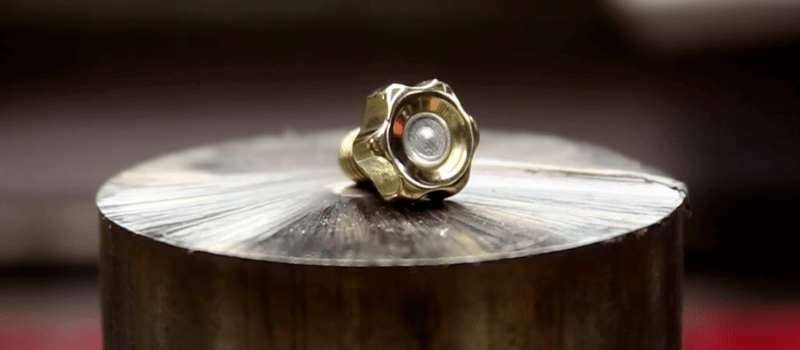Becoming accomplished with a lathe is a powerful skillset, but it’s only half of the journey. Being clever comes later, and it’s the second part of the course. Patience is in there somewhere too, but let’s focus on being clever. [TimNummy] wants a knobbed bolt with critical parameters, so he makes his own. After the break, there is a sixty-second summary of the linked video.
Making stock hardware is a beginner’s tasks, so custom hardware requires ingenuity or expensive machinery. Adding finger notches to a bolthead is arbitrary with an indexing chuck, but one isn’t available. Instead, hex stock becomes a jig, and the flat sides are utilized to hold the workpiece at six intermittent angles. We can’t argue with the results which look like a part that would cost a pretty penny.
Using material found in the workshop is what being clever is all about. Hex brass stock comes with tight tolerances on the sides and angles so why not take advantage of that?
[TimNummy] can be seen on HaD for his Jeep dome light hack and an over-engineered mailbox flag. Did you miss [Quinn Dunki]’s piece on bootstrapping precision machine tools? Go check that out!
















Using the QCTP as a work holder is really clever!
It’s jobs like this where left handed cutting tools can really save the day.
I watched the video without sound.
I’m impressed by that person’s ingenuity!
Nice idea, but it would have been much faster just to use an X-Y table in a drill press. He would have saved the time required to make his indexing tool. The part looks nice though.
Wouldn’t it be even faster with a 5 axis turning center? Geez.
If you don’t have a DRO on that XY table, I bet it would be slower (with a solid chance of messing it up partway). Side load on a drill press is not a good idea, either.
I never mentioned a CNC, most folks would not have that but, they would have a drill press with an X-Y table. Any competent machinist could do it with or without a DRO, it is not hard to read the numbers on the dial. I said it was a nice idea and the part looked nice., I was not giving the fellow a hard time or anything.
I did not mention CNC, either :)
Give that XY table without DRO a try, see how long it takes, compared to flipping the hex stock.
I have, plenty of times. I was a machinist long before DROs were even around so, everyone did it that way. Later, when I was the CEO of Machined Ceramics, Inc. we had digital readouts on all of our machines yet, my Dad, who had been a ceramic machinist at Bell Labs for over 20 years, would never use them. You left out the part where he had to make the hex stock, That took longer than it would have to just make the part and would only make sense if he was setting up to make many of these but, I believe he made only one. I have a precision micro drill on my electronics bench without a DRO and somehow, I am able to still do precision work with it very quickly. If you have to use a DRO when you run a machine, don’t assume everyone needs to. Of course, the older I get, the harder it is to see but, that is another issue, ha ha.
Pirate Labs, don’t know why you made this about the “skills of machinist” or about the feasibility. I am sure you can do sub tenth work on a manual machine without any DRO. This was about the speed. If you are able to position the table on 6 points of a circle with just the dials on the table faster than the guy can flip the hex stock (which even I can drill and tap pretty quickly) then my apologies. You’re the man.
with a 5 Axis you still need to spend time writing the program.
It wouldn’t be a side load it’s a plunging cut. Go to coordinates, quill down. Sure a bit of side load from the interrupted cut, probably no more side load than the unbalanced / untrue spindle oscillating that big ole Jacobs chuck.
I hope a file will work as well?
A file works well when its on a USB and inserted in to a CNC machine :)
OR…. you already have an index in your “precision brass hex stock”… just make six cuts with a mill… then off to the lathe.
So out of curiosity: What do people like this do with the excess material removed? I mean I see it’s mixed with non-brass stuff on the table and I would think in a more professional environment they gather the stuff separated and melt it or sell it for re-use. But do they? I’m wondering because often they remove more material than the end product and certain materials are not cheap, brass and aluminium can run up in cost if you use it in bulk I would think, and both are reusable by melting it back into a block/rod.